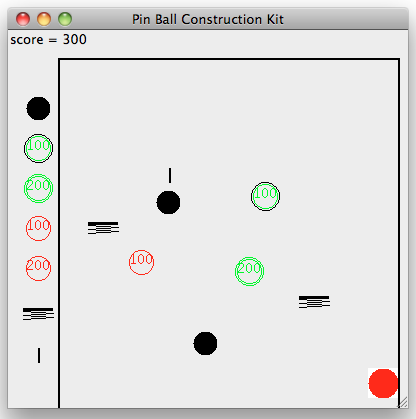TITLE: Examples First, Names Last
AUTHOR: Eugene Wallingford
DATE: August 08, 2012 1:50 PM
DESC:
-----
BODY:
Earlier this week, I reviewed a draft chapter from a book a friend
is writing, which included a short section on
aspect-oriented programming.
The section used common AOP jargon: "cross cutting", "advice", and
"point cut". I know enough about AOP to follow his text, but I
figured that many of his readers -- young software developers from
a variety of backgrounds -- would not. On his use of "cross cutting",
I commented:
Your ... example helps to make this section concrete, but I bet you
could come up with a way of explaining the idea behind AOP in a few
sentences that would be (1) clear to readers and (2) not use "cross
cutting". Then you could introduce the term as the name of something
they already understand.
This may remind you of
the famous passage from Richard Feynman
about learning names and understanding things. (It is also
available on
a popular video clip.)
Given that I was reviewing a chapter for a book of software patterns,
it also brought back memories of advice that Ralph Johnson gave many
years ago on the patterns discussion list. Most people, he said,
learn best from concrete examples. As a result, we should write
software patterns in such a way that we lead with a good example or
two and only then talk about the general case. In pattern style, he
called this idea "Concrete Before Abstract".
I try to follow this advice in my teaching, though I am not dogmatic
about it. There is a lot of value in mixing up how we organize class
sessions and lectures. First, different students connect better with
some approaches than others, so variety increases the chances that of
connecting with everyone a few times each semester. Second, variety
helps to keep students in interested, and being interested is a key
ingredient in learning.
Still, I have a preference for approaches that get students thinking
about real code as early as possible. Starting off by talking about
polymorphism and its theoretical forms is a lot less effective at
getting the idea across to undergrads than showing students a
well-chosen example or two of how plugging a new object into an
application makes it easier to extend and modify programs.
So, right now, I have "Concrete Before Abstract" firmly in mind as
I prepare to teaching object-oriented programming to our sophomores
this fall.
Classes start in twelve days. I figured I'd be blogging more by now
about my preparations, but I have been rethinking nearly everything
about the way I teach the course. That has left my mind more muddled
that settled for long stretches. Still, my blog is
my outboard brain,
so I should be rethinking more in writing.
I did have one crazy idea last night. My wife learned
Scratch
at a workshop this summer and was talking about her plans to use it
as a teaching tool in class this fall. It occurred to me that
implementing Scratch would be a fun exercise for my class.
We'll be learning Java and a little graphics programming as a part of
the course, and conceptually Scratch is not too many steps from the
pinball game construction kit
in Budd's
Understanding Object-Oriented Programming with Java,
the textbook I have used many times in the course. I'm guessing that
Budd's example was inspired by Bill Budge's game for Electronic Arts,
Pinball Construction Set.
(Unfortunately, Budd's text is now almost as out of date as that
1983 game.)
Here is an image of a game constructed using the pinball kit and
Java's AWT graphics framework:
 The graphical ideas needed to implement Scratch are a bit more
complex, including at least:
The graphical ideas needed to implement Scratch are a bit more
complex, including at least:
- The items on the canvas must be clickable and respond to
messages.
- Items must be able to "snap" together to create units of program.
This could happen when a container item such as a choice or loop
comes into contact with an item it is to contain.
The latter is an extension of collision-detecting behavior that students
would be familiar with from earlier "ball world" examples. The former
is something we occasionally do in class anyway; it's awfully handy to
be able to reconfigure the playing field after seeing how the game
behaves with the ball in play. The biggest change would be that the
game items are little pieces of program that know how to "interpret"
themselves.
As always, the utility of a possible teaching idea lies in the details
of implementing it. I'll give it a quick go over the next week to see
if it's something I think students would be able to handle, either as
a programming assignment or as an example we build and discuss in
class.
I'm pretty excited by the prospect, though. If this works out, it
will give me a nice way to sneak basic language processing into the
course in a fun way. CS students should see and think about languages
and how programs are processed throughout their undergrad years, not
only in theory courses and
programming languages courses.
-----

